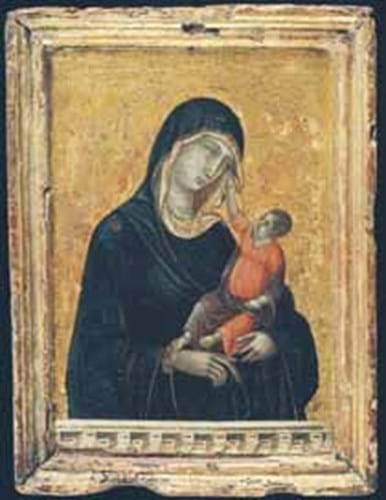
With a price tag of around $45m (£25m), it is the most expensive object ever purchased by the museum. However - sold through Christie's - it is also thought to be the largest private sale negotiated by an auction house to an institution.
The 10 5/8 x 8in (27 x 21cm) tempera and gold on wood panel, c.1295-1300, depicting the Madonna and Child above a trompe l'oeil parapet occupies an important moment in Sienese painting and the evolution of Western devotional art. One of only a dozen or so autograph works by the artist in his extant oeuvre, it has never been publicly exhibited.
The picture, previously known as the Stoclet Madonna after Adophe Stoclet who bought it in 1923, will now be named after its first recorded owner. Count Grigorii Stroganoff, an expatriate who lived in Rome, was one of a number of Russians in the 19th century who collected early Italian art.
Works of art from the Stoclet family have been sold by auction and through the trade in recent times.
Reports suggest that the painting had also been offered to the Getty - who had considered the price excessive - but the Met's biggest competitor for the panel seems to have been the Louvre in Paris which, like the Met, owned no works by the father of Sienese painting.




